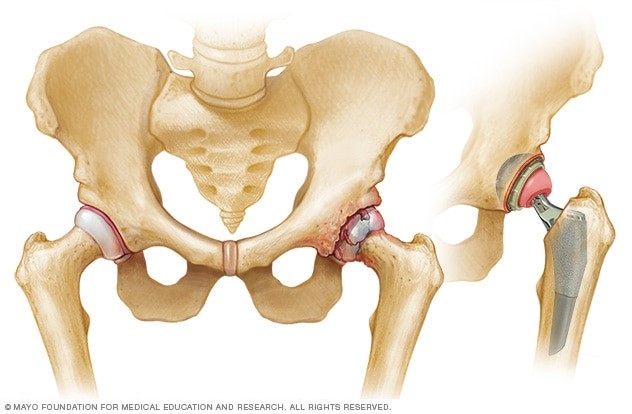Overview

During hip replacement, a surgeon removes the damaged sections of your hip joint and replaces them with parts usually constructed of metal, ceramic and very hard plastic. This artificial joint (prosthesis) helps reduce pain and improve function.
Also called total hip arthroplasty, hip replacement surgery might be an option for you if your hip pain interferes with daily activities and nonsurgical treatments haven’t helped or are no longer effective. Arthritis damage is the most common reason to need hip replacement.
Why it’s done
Conditions that can damage the hip joint, sometimes making hip replacement surgery necessary, include:
- Osteoarthritis. Commonly known as wear-and-tear arthritis, osteoarthritis damages the slick cartilage that covers the ends of bones and helps joints move smoothly.
- Rheumatoid arthritis. Caused by an overactive immune system, rheumatoid arthritis produces a type of inflammation that can erode cartilage and occasionally underlying bone, resulting in damaged and deformed joints.
- Osteonecrosis. If there isn’t enough blood supplied to the ball portion of the hip joint, such as might result from a dislocation or fracture, the bone might collapse and deform.
You might consider hip replacement if you have hip pain that:
- Persists, despite pain medication
- Worsens with walking, even with a cane or walker
- Interferes with your sleep
- Makes it difficult to get dressed
- Affects your ability to go up or down stairs
- Makes it difficult to rise from a seated position